
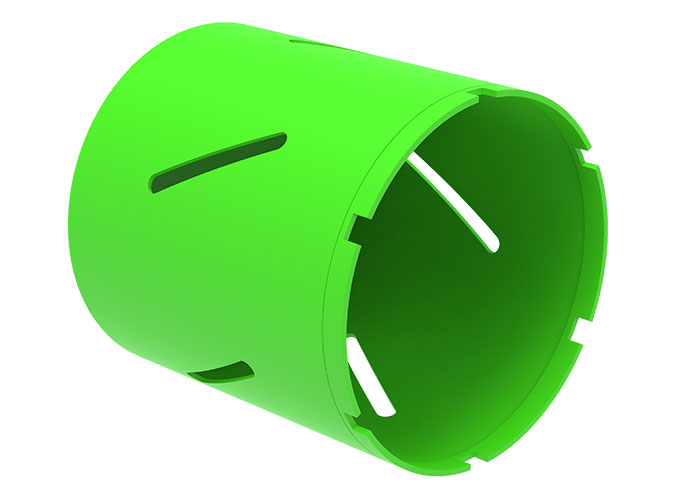
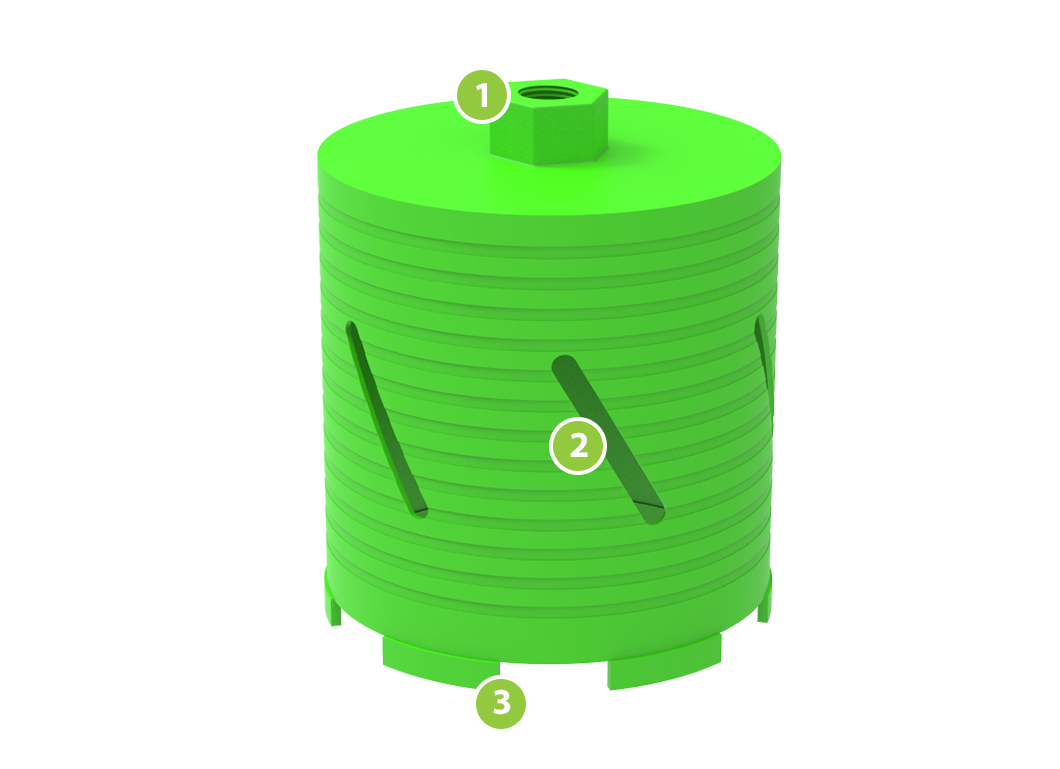
22m / 28mm / 42mm / 52mm / 127mm / 152mm XPRESSCUT is perfect to work alongside DUOCUT when enlarging existing holes within a wall for larger waste pipes, larger gas pipes, larger boiler flues, recessing soil fittings or rubber flue sealing grommets!
Our 22mm and 28mm (300mm long) high quality core bits can also be used to minimise making good from blowing the brick face or blowing a rendered wall.*
*compared to drilling holes when using an SDS drill bit on hammer action!
1 – 1/2″ BSP female thread
2 – Spiral and slotted barrel
3 – UK designed high quality diamond tips for UK building materials
Please note: The 22mm & 28mm x 300mm long cores are not suitable for SDS drills due to the low RPM. A mains powered Core drill rated at 850 Watts minimum is suitable for use on standard bricks (not engineering bricks) and standard concrete blocks.

Long Core Bit 22mm x 300mm Long
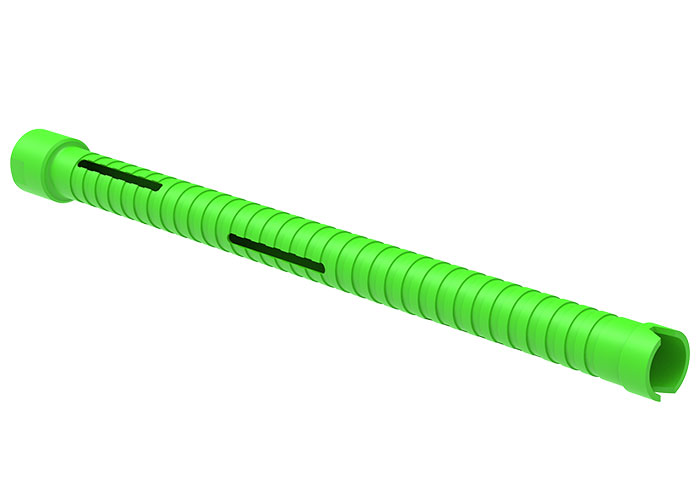
Prevents blowing the brick-face or render wall compared to an SDS drill bit on hammer action.
Long Core Bit 28mm x 300mm Long

Prevents blowing the brick-face or render wall compared to an SDS drill bit on hammer action.
42mm x 150mm Core Bit
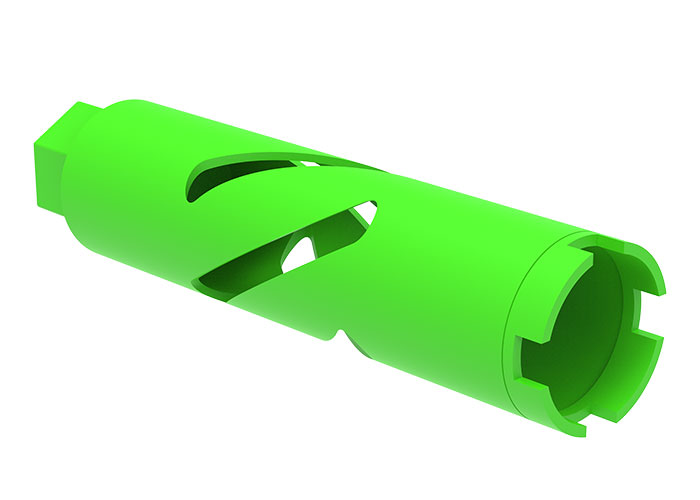
Suitable for use with 32mm solvent weld waste pipe elbow.
52mm x 150mm Core Bit
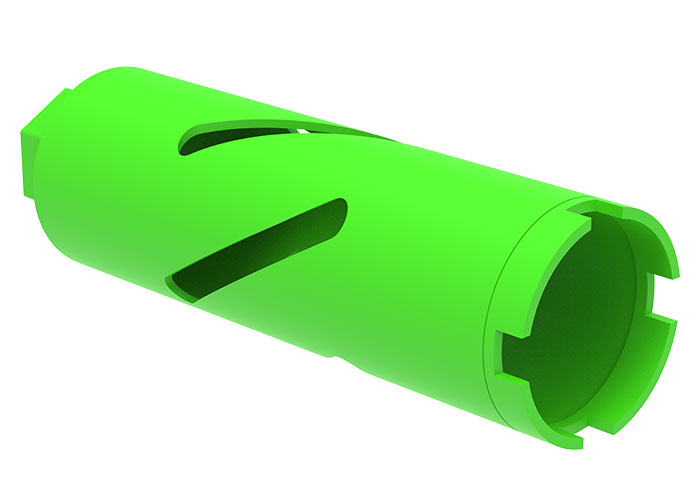
Suitable for use with 40mm solvent weld waste pipe elbow or when using a pipe snug wall collar.
78mm x 150mm Core Bit
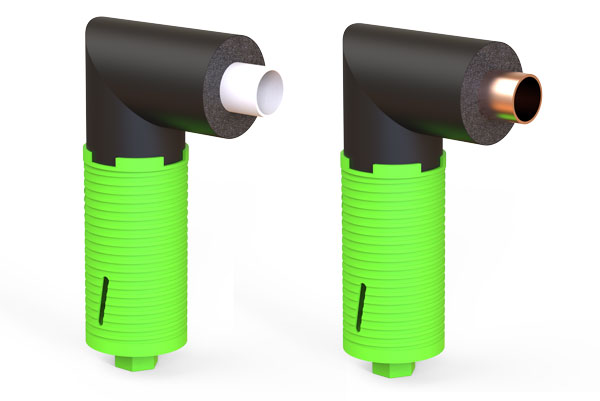
Suitable for use with insulated condense pipe (32mm waste pipe & 19mm wall thickness insulation as per BS 6798) and for heat pumps to prevent cold bridging (28mm or 35mm copper & 19mm wall thickness insulation).
127mm x 150mm Core Bit
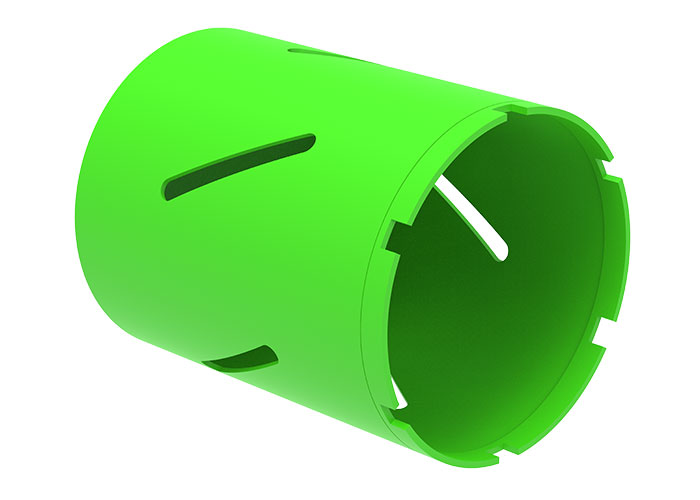
Suitable for use with boiler flue pipes.
152mm x 150mm Core Bit

Suitable for use when recessing 110mm soil fittings into a wall (commonly used for a swept branch on a soil stack) or when using a flue snug wall collar.
DISCLAIMER
a) They should not be used to drill through site cast concrete, hard brick such as engineering brick or hard stone.
b) Perfect results are easily achieved by using any rotary drill with a minimum drive power of 850 watts. The machine should also be capable of speeds of up to 3000 rpm and have a variable speed control and slipping clutch.
c) Whenever possible use an 850-watt (min) rotary drill fitted with slipping clutch and variable speed control.
d) Clear the debris at regular intervals, as a build-up of dust will cause overheating, extensive clutch wear and possible loss of segments.
e) The harder the material and larger the diameter of core, the slower the rpm.
f) The softer the material and for smaller diameter cores, the higher the rpm.
g) Reduce pressure if the bit starts to vibrate.
h) Do not – Use hammer action when drilling with a dry diamond core drill.
i) Do not – Force the core, let it do the work, this will prolong its life and reduce the chance of failure.
We take no responsibility or liability for any damages or failure arising out of, or in connection with misuse of the product. Should damage occur to the diamond segments (separated from the barrel). We must receive the photographic evidence within 48hrs of any situation occurring for examination by our technicians, to: [email protected]
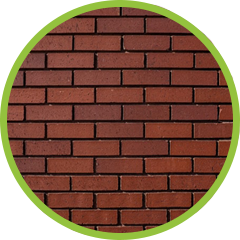
Building Materials
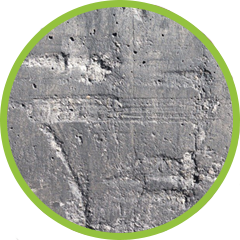
Abrasive Materials
| Material | Regular use (✔️) | Occasional use (✔️) |
|---|---|---|
| Bricks - Class A engineering | ✔️ | |
| Bricks - Class B engineering | ✔️ | |
| Bricks - standard facing | ✔️ | |
| Clay products | ✔️ | |
| Concrete - Beams, Kerbs, Pipes, Slabs | ✔️ | |
| Concrete blocks (3 to 7 Newton) | ✔️ | |
| Concrete blocks (7 to 12 Newton) | ✔️ | |
| Concrete blocks (12+ Newton) | ✔️ |
What do Engineering Bricks look like?
Engineering Bricks have a smooth finish with perforations through the top to the bottom. They are widely available in blue or red and are identifiable by their uniform shape.
Class A engineering bricks have a higher compressive strength over class B and are harder to drill.
